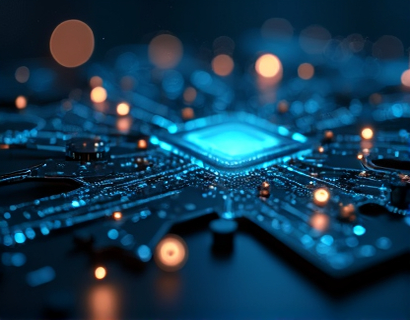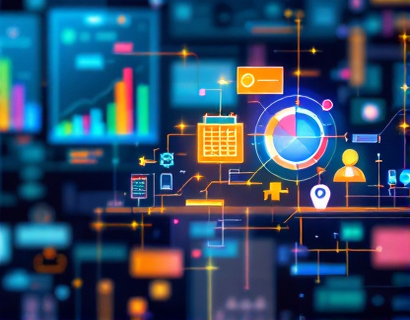AI-Powered Trigonometry Learning: Revolutionizing Education
In the ever-evolving landscape of education, technology plays a pivotal role in enhancing learning experiences. One of the most exciting advancements in this realm is the integration of artificial intelligence (AI) into educational platforms. Specifically, AI-powered trigonometry learning platforms are transforming how students, educators, and math enthusiasts engage with this essential branch of mathematics. This article explores the benefits of an interactive AI chat platform that offers verified content, child-friendly access, and a secure environment for all users.
The Importance of Trigonometry in Education
Trigonometry is a fundamental area of mathematics that deals with the relationships between the angles and sides of triangles. It is not only crucial for advanced mathematical studies but also has practical applications in various fields such as engineering, physics, architecture, and computer science. Understanding trigonometry is essential for students as it lays the groundwork for more complex mathematical concepts and real-world problem-solving skills.
Challenges in Traditional Trigonometry Education
Despite its importance, many students struggle with trigonometry due to its abstract concepts and the traditional teaching methods employed in classrooms. Educators often face challenges in making the subject engaging and accessible to all learners. Additionally, the availability of resources that cater to different learning styles and paces is often limited. This is where AI-powered platforms can make a significant difference.
AI-Powered Learning: A Game Changer
AI-powered learning platforms utilize advanced algorithms to provide personalized educational experiences. These platforms can adapt to individual learning styles, offering tailored content that meets the specific needs of each student. By leveraging AI, educators can create a more engaging and effective learning environment that fosters a deeper understanding of trigonometry.
Interactive Chat Interface
One of the standout features of an AI-powered trigonometry learning platform is its interactive chat interface. This interface allows users to engage in real-time conversations with the AI, asking questions and receiving instant feedback. This immediate interaction helps clarify doubts and reinforces learning, making the study of trigonometry more dynamic and less intimidating.
Specialized and Verified Content
Content accuracy is paramount in education, especially in subjects like trigonometry where precision is key. AI-powered platforms ensure that all content is verified and up-to-date, providing users with reliable information. This verification process not only enhances the credibility of the platform but also builds trust among users, knowing they are accessing quality educational resources.
Child-Friendly Access
For younger learners, a child-friendly version of the platform is essential. This version is designed to be safe and engaging for children, featuring age-appropriate language, visuals, and interactive elements. By creating a secure environment, parents and educators can feel confident that children are exploring trigonometry in a way that is both educational and enjoyable.
Benefits for Educators
Educators can greatly benefit from incorporating AI-powered trigonometry learning platforms into their teaching strategies. These platforms provide a wealth of resources that can enhance lesson plans and facilitate differentiated instruction. Here are some key advantages for educators:
- Enhanced Engagement: Interactive features capture students' attention and encourage active participation in learning.
- Data-Driven Insights: AI platforms can analyze student performance, providing educators with valuable insights into individual progress and areas needing improvement.
- Resource Accessibility: Educators can access a wide range of verified materials, including tutorials, practice problems, and assessments, all in one place.
- Time Efficiency: Automating certain aspects of teaching, such as grading and feedback, allows educators to focus more on personalized instruction.
Benefits for Students
Students also stand to gain significantly from AI-powered trigonometry learning platforms. The personalized and interactive nature of these platforms caters to diverse learning needs, making trigonometry more accessible. Here are some benefits for students:
- Personalized Learning: Students can learn at their own pace, revisiting concepts as needed and progressing when they feel ready.
- Immediate Feedback: The chat interface provides instant answers to questions, helping students understand concepts in real-time.
- Engaging Content: Interactive elements, such as games and quizzes, make learning fun and motivate students to explore further.
- Safe Learning Environment: The child-friendly version ensures that younger students can learn without exposure to inappropriate content.
Benefits for Math Enthusiasts
Math enthusiasts, whether they are self-learners or individuals looking to deepen their understanding of trigonometry, can also find value in AI-powered platforms. These platforms offer a wealth of resources that cater to various interests and levels of expertise:
- Advanced Resources: Enthusiasts can access specialized content that delves deeper into trigonometric concepts and applications.
- Community Engagement: Many platforms foster a community of learners, allowing enthusiasts to connect, share insights, and collaborate on projects.
- Continuous Learning: The availability of updated content ensures that users can stay informed about the latest developments in the field of trigonometry.
Integration with Educational Institutions
Educational institutions can play a crucial role in the successful implementation of AI-powered trigonometry learning platforms. By integrating these tools into their curricula, schools and universities can enhance the overall learning experience for students. Here are some ways institutions can benefit:
- Curriculum Enhancement: AI platforms can complement existing curricula, providing additional resources and support for both students and educators.
- Professional Development: Educators can receive training on how to effectively use AI tools in their teaching, ensuring they maximize the benefits for their students.
- Collaboration Opportunities: Institutions can collaborate with AI platform developers to create customized content that aligns with their specific educational goals.
Future of Trigonometry Education
The future of trigonometry education looks promising with the continued advancement of AI technology. As these platforms evolve, we can expect even more innovative features that enhance learning experiences. Potential developments may include:
- Augmented Reality (AR) Integration: AR could provide immersive learning experiences, allowing students to visualize trigonometric concepts in a three-dimensional space.
- Gamification: Incorporating game elements into learning can further engage students and motivate them to explore trigonometry.
- Adaptive Learning Algorithms: Future platforms may utilize even more sophisticated algorithms to tailor content to individual learning styles and preferences.
Conclusion
AI-powered trigonometry learning platforms represent a significant advancement in the field of education. By providing interactive, verified content in a secure environment, these platforms cater to the needs of students, educators, and math enthusiasts alike. The benefits of personalized learning, immediate feedback, and child-friendly access make these tools invaluable for fostering a deeper understanding of trigonometry. As technology continues to evolve, the potential for enhancing trigonometry education is limitless, paving the way for a new generation of learners equipped with the skills they need to succeed in an increasingly complex world.










































